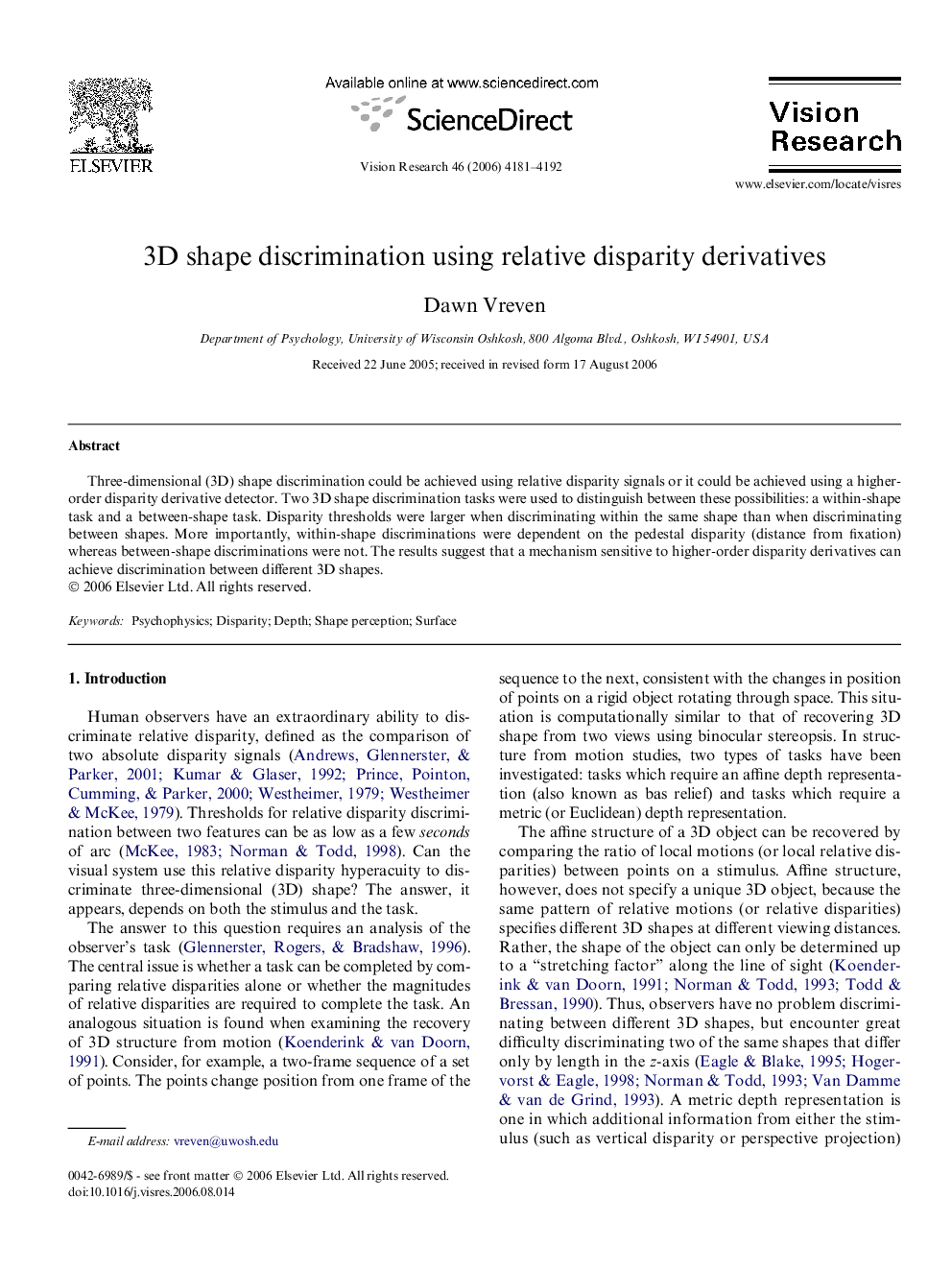| Article ID | Journal | Published Year | Pages | File Type |
|---|---|---|---|---|
| 4036157 | Vision Research | 2006 | 12 Pages |
Abstract
Three-dimensional (3D) shape discrimination could be achieved using relative disparity signals or it could be achieved using a higher-order disparity derivative detector. Two 3D shape discrimination tasks were used to distinguish between these possibilities: a within-shape task and a between-shape task. Disparity thresholds were larger when discriminating within the same shape than when discriminating between shapes. More importantly, within-shape discriminations were dependent on the pedestal disparity (distance from fixation) whereas between-shape discriminations were not. The results suggest that a mechanism sensitive to higher-order disparity derivatives can achieve discrimination between different 3D shapes.
Related Topics
Life Sciences
Neuroscience
Sensory Systems
Authors
Dawn Vreven,
